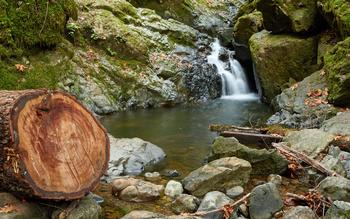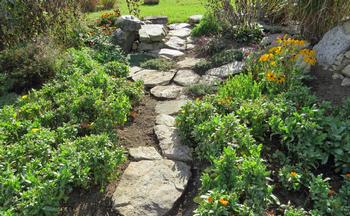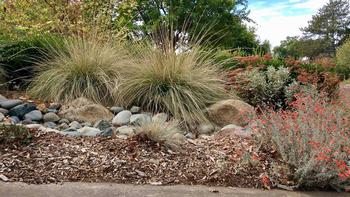Protecting our precious water
-
Nanette Londeree
-
Water restrictions are a painful reality for Marin, and we gardeners are grappling with how to protect our beloved plants and meet the required reductions. While water supply is uppermost in our minds, it’s beneficial to look at the big water picture - where it comes from, where it goes, and what it may take with it as it moves. Whether you’re raising fruits and vegetables, growing roses, maintaining heritage trees, or caring for a garden of succulents, they all need water. What you use in your garden doesn’t necessarily stay in your garden. Welcome to your watershed!
A watershed is all the land that drains rainwater or snowmelt into creeks, streams, rivers, and eventually to reservoirs, bays, and the ocean. When well-functioning, it captures falling rain, slows the flow of that water as it moves through the stream system, removes pollutants, cycles nutrients, and allows the water to percolate into the ground to recharge groundwater. All land, from the wildest preserve to the most densely developed urban neighborhood, is part of a watershed. And our everyday actions affect our watersheds. Beautiful Cataract Falls is part of the Mt. Tamalpais watershed. Photo: Wikimedia Commons
Beautiful Cataract Falls is part of the Mt. Tamalpais watershed. Photo: Wikimedia CommonsMarin's watersheds include more than 3,000 miles of creeks. Some of these waterways flow into our lakes for storage, while others feed into San Francisco Bay and onto the ocean. The Mt. Tamalpais Watershed is one of the county’s most valuable natural resources and potable water source for most residents.
Water captured in our reservoirs passes through a drinking water treatment plant for physical and chemical processing. Once used in the home, drains carry water from toilets, sinks, and showers to wastewater treatment plants, where it is processed and disinfected before being released into the bay. The treatment process doesn’t, however, detoxify pharmaceutically active compounds, pesticides, and metals – their residue ends up in our waterways.
Ideally, the water you use for irrigation lands on the soil where it soaks in, carrying valuable nutrients with it. Water that hits hard, impervious surfaces runs into street gutters and then into storm drains that are designed to prevent flooding. Unfortunately, the storm drain system provides a direct route to the bay for the fertilizers, pesticides, and other chemicals commonly used around our homes and gardens. Use permeable materials to slow water flow, spread it out, and allow it to sink in. Photo: PxHere
Use permeable materials to slow water flow, spread it out, and allow it to sink in. Photo: PxHereFertilizers are a particular problem. When nitrogen and phosphorus aren’t fully used by growing plants, the excess washes into our waterways during rain events. Known as nutrient pollution, too much nitrogen and phosphorus in the water causes algae to grow faster than ecosystems can handle. “When people use fertilizers, herbicides, or other pesticides on their lawns, gardens, and around the outside of their homes, these chemicals can flow down into the watershed and concentrate in our creeks and bays,” notes Rob Carson, Program Manager for the Marin County Stormwater Pollution Prevention Program (MCSTOPPP). “The pesticides can create toxic environments for creatures in the creek, and the fertilizers fuel algal growth which can lead to water quality problems and fish kills.”
All of us can help protect our watershed and the plants, fish, birds, and other wildlife that depend on it. We gardeners can: Use diverse plant types including trees, shrubs, grasses, and flowers to help support a healthy watershed. Photo: Alicia Springer, UC ANR
Use diverse plant types including trees, shrubs, grasses, and flowers to help support a healthy watershed. Photo: Alicia Springer, UC ANR- Plant a variety of types and species of plants, from grasses for erosion control and wildflowers for bees and butterflies to shrubs and trees for birds and healthy streams. Choose native plants that fit your specific location and conditions.
- Encourage rainwater to slow, sink, and spread into the soil using porous alternatives such as gravel or permeable pavement for driveways and paths.
- Reduce the use of chemical fertilizers that can lead to excess plant and algae growth in waterways. Instead, use natural fertilizers or compost to release nutrients slowly into the soil.
- Use the least toxic pest control methods. If you have pesticides you no longer use, take them to your local household hazardous waste facility.
To learn more about our invaluable watersheds, visit the Marin Watershed Program at https://www.marinwatersheds.org/ and pollution prevention at MCSTOPPP at https://mcstoppp.org/.



